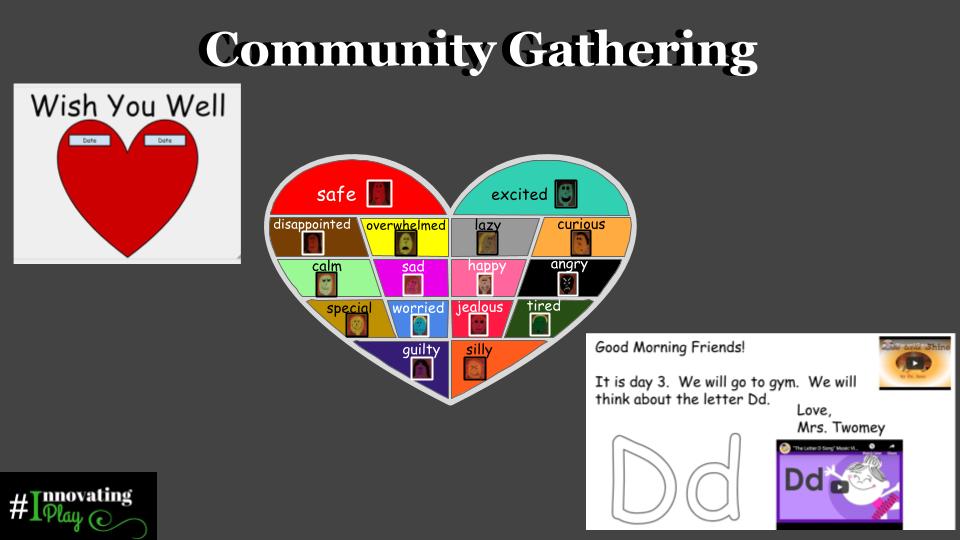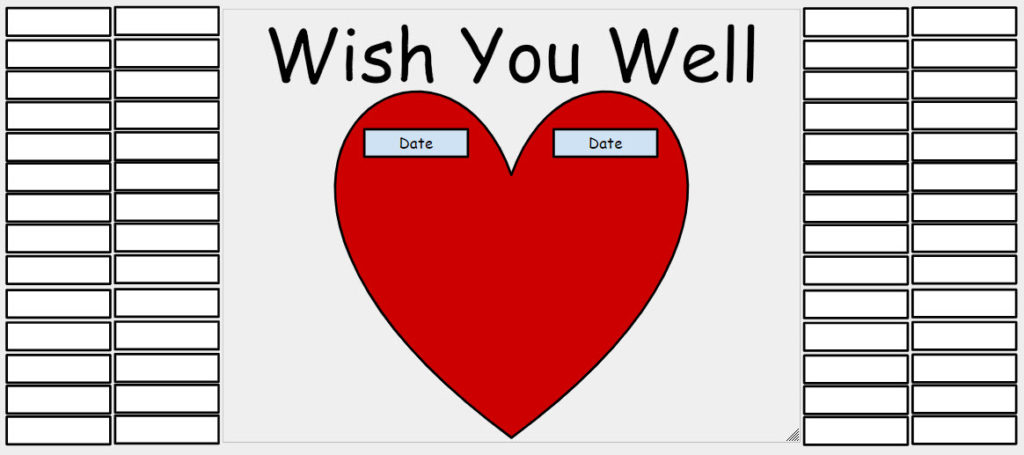
Right after our Connected Play time, children take part in the Community Gathering. This time is dedicated to connect as a group and make sure individual needs are SEEN and recognized by the community. For the children, there is a flow between “the world I see” and “the world beyond me.” The kids are given the chance to develop empathy by checking in with themselves, those around them, and those in a different space.
Prior to creating our Community Gathering piece in our schedule, we asked ourselves these guiding questions:
How can we tell what is happening in the classroom?
How do we know what’s happening with each other?
How are we making connections to our learning?
How do we know what is happening with others outside our classroom?
Wish You Well
I (Christine) kick off the Community Gathering by saying good morning to each student. There is such purity in the moment to look each child in the eyes and say good morning to them. (The kids will motion with “air hugs” or “air high fives” when they say good morning back to me, and I will reciprocate the gesture.) A teacher bonus with greeting each student means that I have just taken attendance. 😉 We remember who was absent after I have greeted everyone, and place the student(s) names inside the Wish You Well heart (this is a ritual from Conscious Discipline).

You’ll notice that there are two sets of text boxes on the outside of the heart. This is so that Jessica and I can both have our kids names on the Wish You Well board. Wish You Well time is one of the ways we get to check in, for the kids to think about what is outside of their world as their peer(s) in California and New Jersey may not be in school. Even if we do not know the reason that they are absent, we sing the Wish You Well song to wish them well. (To the tune of the Farmer in the Dell.)
“We wish you well.
We wish you well.
All through the day today, we wish you well!”
Feelings Check In
Throughout the day children experience a variety of emotions. As part of our community gathering, among the first things we do is take time to recognize our own feelings and the feelings of others around us. This begins as we invite the children to SHOW how they are feeling using only facial expressions and body language. Children take a moment to check in with the teacher, and then check in with each other to share their feelings. We then ask the children to share how a friend is feeling today? With this, we ask for specific clues that helped them to identify the feeling (they smiled and the corners of their mouth turned up, their cheeks lifted, and their eyes got a little squinty). After sharing what we notice about others, we turn to our Feelings Heart.
